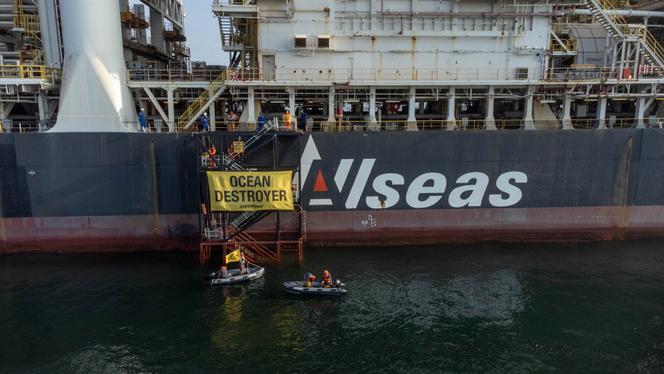


Every summer, when delegations from the member states of the International Seabed Authority (ISA) meet at its headquarters in Kingston, the Jamaican capital, the private firm most aggressively seeking to exploit the deep-sea minerals destined for electric car batteries is the most likely to make a splash. The Metals Company (TMC), a Canadian company listed on the New York Stock Exchange, was no exception to the rule during the week of July 15, when the United Nations-affiliated body was meeting in conclave until August 2.
In 2023, TMC insisted on the advantages of using robots to harvest polymetallic nodules at depths of 4,000 to 6,000 meters, rather than resorting to human labor in terrestrial mines under sometimes highly questionable social conditions. This time, however, TMC's directors are highlighting the presumed environmental harmlessness of the machine they intend to use to "harvest" these concretions composed mainly of nickel (43%), manganese (28%), copper (18%) and cobalt (11 %).
Michael Clarke, environmental manager of a TMC exploratory mission in the Pacific Ocean off the coast of Mexico, claimed that after the machine passes over the seafloor, "we see organisms returning to the site a year later." These comments have raised the eyebrows of scientists, some of whom have previously claimed that even after 25 years, no life has reappeared where nodules have been removed by man.
"At these depths, the soil consists of silt, and these rocky nodules are themselves the only possible habitat for many animals and plants. If we bring the nodules to the surface, there is absolutely no way back for these organisms," explained Pierre-Antoine Dessandier, a researcher at the Institut Français de Recherche pour l’Exploitation de la Mer (IFREMER, French Research Institute for Exploitation of the Sea) who specializes in deep-sea ecosystems. He added that the collecting machine "breaks the links between the surface layers of sediment and the water column above, interrupting the passage of nutrients from the water to the mud, which in turn is home to an entire meiofauna" – in other words, animals smaller than a millimeter in size.
Another controversial topic is the carbon stored at the bottom of the ocean. According to TMC, mining the abyss is unlikely to result in its release into the atmosphere, as feared by NGOs, because at great depths it exists in trace amounts and in refractory form, meaning it is highly stable due to its ancient age. "The oceans are the planet's largest carbon sink, but seabed sediments harbor less than 5% of the total. And only 1.5% of the total carbon buried in sediments is found in the abyssal plains and mounts, which nevertheless cover almost 90% of the total ocean surface area," Clarke argued.
You have 48.73% of this article left to read. The rest is for subscribers only.
